 |
RESEARCH PROJECTS from 2009:
 |
Research projects of the Ministry of Agriculture of the Czech Republic:
Stabilisation of forest functions in anthropically disturbed and changing environmental conditions
(coordinator A. Jurasek; 2009 - 2013; No. MZE0002070203)
The Research Plan focuses on the stabilisation of forest functions under anthropically disturbed and changing environmental conditions. At present, these topics are of concern to practically all the forests in the Czech Republic. Research is based on the main activity of the FGMRI and takes into account the obligations resulting from the 4th and 5th Ministerial Conference on the Protection of European Forests (Vienna 2003, Warsaw 2007), Strategic Objectives for European Action Plan for Forest Management (2005) and Action Plan EU for Forests (2006). The Objective of the Research Plan as a whole is to obtain new scientific information on various aspects of forestry and to integrate this information into the strategic objectives of forest management. Specificially, the goal is to improve the sustainability of forest management by increasing biodiversity, preserving and supporting of forest functions and supporting the adaptation to possible changes in environmental conditions. From a nationwide view point the expected new scientific results will be applicable in environment protection and flood prevention.
The Research Plan is, because of its complexity, divided into five interconnected Partial Research Plans (PRP 01 to 05) focusing on the following topic research problems:
Partial intention PRP 01Ecological stability of forest stands and dynamics of environmental changesy
(coordinator V. Šrámek)
PRP 01 will study and evaluate the changes of air pollution and climatic conditions and meteorological stress, and their impact on forest stands in the perspective of today and historical load of acid deposition and ozone impact. The changes and development of climatic conditions, occurrence of extreme weather situations, development of growth and vitality of the forest stands, and site characteristics and biodiversity parameters will also be studied. Attention will be paid to the dynamics of nitrogen, phosphorus and other nutrients and stress elements in the forest ecosystems under changing environmental conditions. The current results of investigation of forest soil characteristics and biodiversity parameters will be evaluated. Present possibilities of the monitoring of the carbon pool in forest soil, nutrition of forest tree species and nutrient supply limits, including the element ratio will be evaluated and studied in detail. The relationship among nutrition, health status and growth of the forest stands and other environmental factors will be evaluated within regions of large air pollution clearcuts. The hydrological part of the project will focus on regions more sensitive to precipitation misbalances (spruce stands at lower altitudes), where water flow in the forest soil, together with the health state and growth of trees will be evaluated under real and/or potential dryness situations. The impact of forest stands of different ages on the changes in chemistry of soil water and water run-off in the forest environment will also be studied.
Partial project is divided into three parts:
Objectives of the project is to support sustainable forest management with the use of the criteria and indicators of monitoring and evaluation, as adopted by the Ministerial Conference on Forest Protection in Europe (Vienna, 2002).
![]()
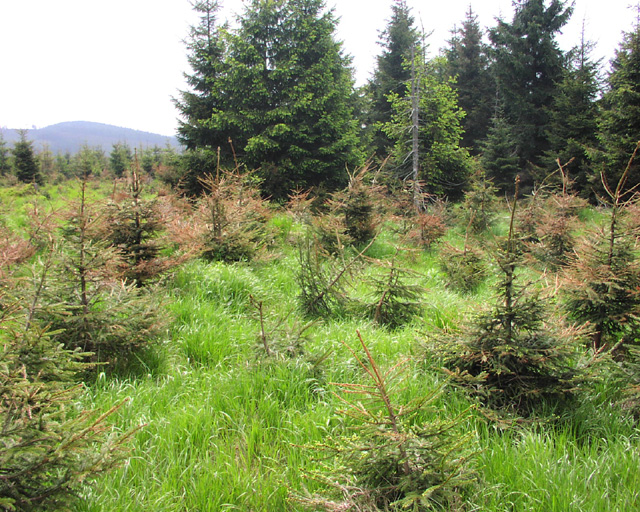
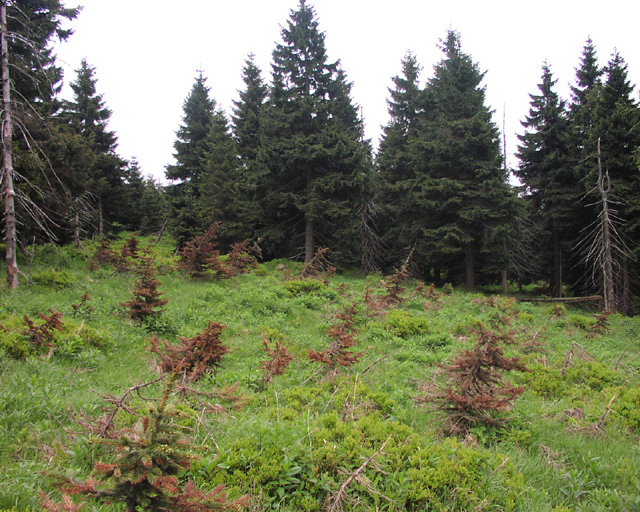
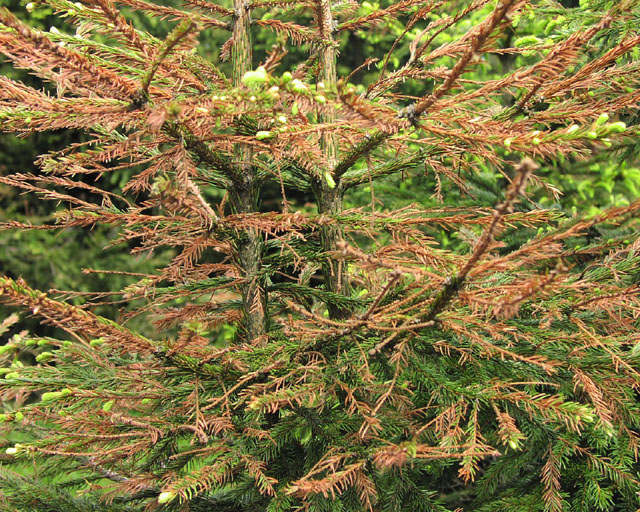
![]()
Importance of insect and fungi in forest ecosystems under changing environmental conditions
(coordinator P. Zahradník)
PRP 02 will focus on the gathering of basic data about the importance and function of selected forest dendrophagous organisms, and analysis and synthesis of the data. The research will focus on the study of symbiotic and competitive relations, management influences on biodiversity, taxonomy, bionomy and population dynamics of forest insects as well as on the possibility of using pathogenic and parasitic organisms in biological forest protection. The studies will concentrate on cambioxylophagous and foliophagous insects plus fungus symbionts and pathogens occurring in forest ecosystems. Changing environmental conditions are influencing the behavior of these organisms and also their distribution and role in forest ecosystems. Species of low economic or cenotic importance or rare species are often becoming more frequent and they may have a high local and/or regional importance in stressed forest stands. Special attention will be paid also to invasive and quarantine species, which may invade or be introduced into the new regions of central Europe and may potentially endanger the health and/or survival of forest stands. This research relates to commitments of the CR resulting from conclusions of ministry conferences on European forests protection (Strasburg, Lisbon, Vienna) and international agreements on biodiversity protection (Rio de Janeiro).
Partial research plan is divided into four thematic blocks:
The objectives of the project is to study the structure and function of forests and key groups of organisms with application in ecological methods of forest protection necessary for future biodiversity of forests.
![]()



![]()
Breeding, preservation and reproduction of forest tree species gene pool under changing environmental conditions
(coordinator P. Máchová)
Partial intention PRP 03 is aimed at acquiring scientific information about genetically conditioned variability of forest tree species gene pool and partial populations. Within the framework of long-term breeding programs, tests will be done on both quantitative and qualitative characteristics of forest tree species, with the goal of using auto vegetative reproduction methods for creation of synthetic varieties of the tested experimental variants. Provenance research will centre especially on actualisation of reproductive material transfer rules. The objectives of the hybridization experiments are to obtain information on breeding variants genetic parameters, together with selection of valuable hybrid combinations. Also, sources of reproductive material will be tested with the goal of proposing the most valuable variants to be enlisted among second generation seed orchards and tested sources. During the research attention will be paid to valuable forms and ecotypes of forest tree species, including rare and threatened species. Introduced tree species will be tested with regards to their use in changing environmental conditions. Special attention will be paid to problems of fast growing tree species. Biotechnology research will done to acquirement new information about morph-regulation processes of forest tree species micro propagation, growth of explants in vitro during ontogenesis and acceleration of breeding procedures, including genetic engineering. Research in the framework of molecular genetics of forest tree species will be directed towards studies of forest tree species populations' genetic variability and their certain genetic identification by the gene markers. Research will be done on flowering, fructification, management practices and health of seed orchards of selected species. Also, seed quality and the effects of presowing treatments on dormant tree seed germination will be studied.
Partial project 03 is divided to 5 thematic blocks:
The objective of the research will be the preservation and/or increasing of stability of forest tree species gene and reproductive material sources with the aim to stabilize the basic role of the ecosystems biodiversity.
![]()
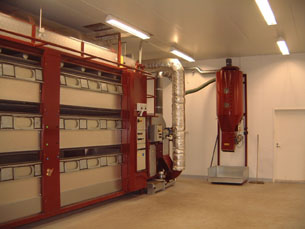

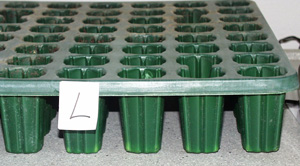
![]()
Establishment of forest stands and afforestation under changing environment conditions
(coordinator A. Jurásek)
PRP 04 focuses on forest stand sustainability, regeneration and health of young stands under specific conditions (mountain regions, the lowest locations under threat of drought, extreme soil conditions). Studies will be made on determining the impacts of new nursery and planting technologies upon artificially regenerated stands using propagation by cuttings to reveal their role in increasing forest ecosytem stability. Studies of growth of site-specific-mountain populations will be included. As well, the new problems of regeneration and growth of principal tree species will be examined in terms of biologically and economically appropriate measures for establishment of diversified-mixed stands under conditions of site-specific required forest functions. A dynamic of forest environment restoration on long-term-cultivated former non-forest land will be evaluated including site-induced risks on these localities.
The partial project is falls under three main topics:
The research is aimed at preserving and increasing biological diversity, integrity and the health of newly established forest stands including their resistance to probable climate and environmental changes.
![]()
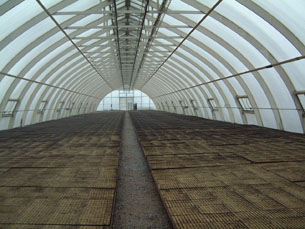
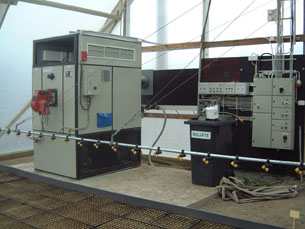
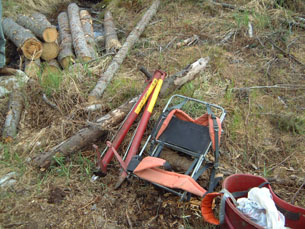
![]()
Partial intention PRP 05
Support of forest functions by silvicultural treatments during thinning and regeneration of forest stands
(coordinator M. Slodičák)
PRP 05 is aimed at determining the effect of silviculture measures upon maintenance and strengthening of forest functions and providing protection against natural disasters and supporting economical, multifunctional and sustainable forest management. The project deals with different thinning regimes of major tree species in relation to wood production (quantity, quality, sustainability) and health. The project includes the questions of thinning effect (including unthinned variants) upon soil formation and soil protection (litter fall, decomposition and subsequent biomass accumulation in forest-floor humus, carbon sequestration and nutrients turnover) plus diversification of spatial stand structure and stabilization of the stands before conversion including possibilities of near-natural management utilization. Silvicultural measures protecting soil against degradation, supporting optimization of water management in the landscape, inhibiting climatic extremes impact and leading to more structured stands fulfilling demanded forest roles under extreme soil and climate conditions will be proposed and verified. A part of the PRP studies will focus on conversion and diversification of spruce and pine monocultures situated under unsuitable ecological conditions including formation of stand mixtures. The research includes a conversion of first-generation forests.
The partial research plan is divided into three topics:
The research plan is aimed to get information on silviculture measures leading to increased adaptability and resistance of forest ecosystems in long-term scale under changing environmental conditions.
![]()
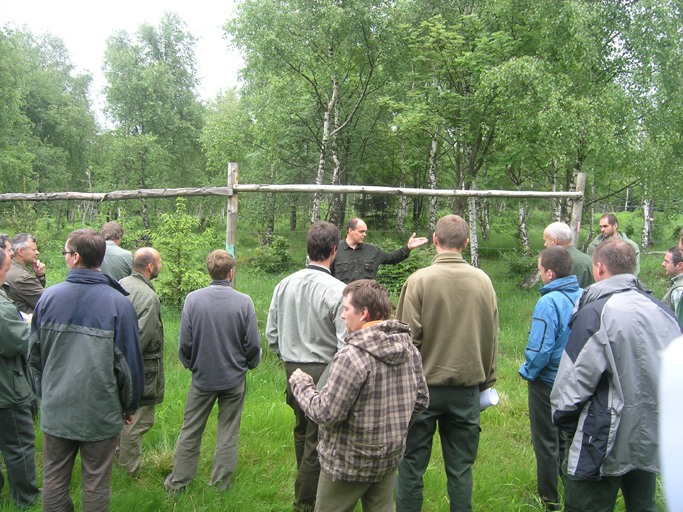
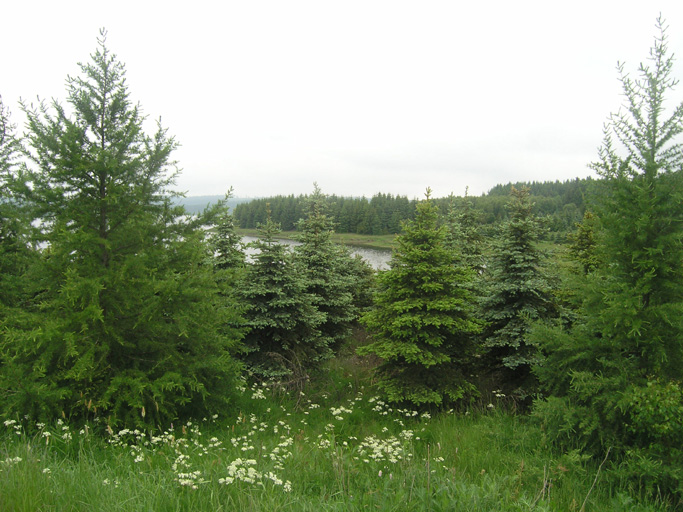
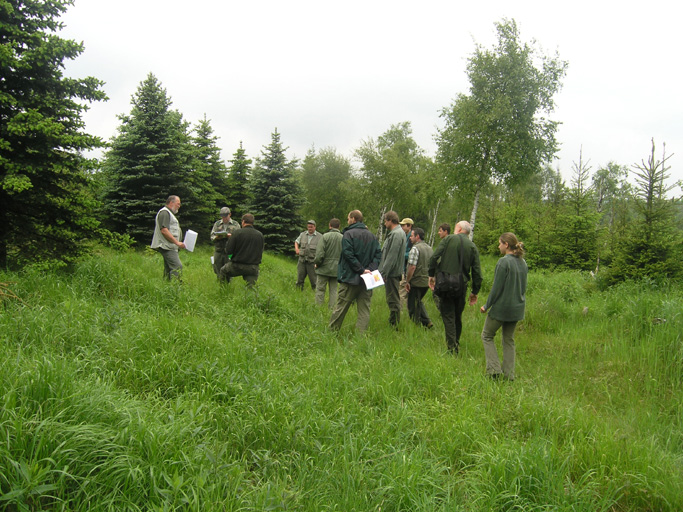
 |
Research projects of the "NAZV" (National Agency for Agricultural Research)
Forestry and agriculture aspects of water component control in a landscape
(solvers: V. Cernohous, D. Kacalek, P. Kantor, Z. Kulhavy, F. Sach, 2011 - 2014, NAZV no. QI112A174)
The project is based on study of water regime of mountain and sub-mountain forest and agriculture ecosystems and methods of their management. It utilizes long time operated system of experimental silviculture and agriculture-ameliorative hydrologic objects in mountain and sub-mountain region of the Orlické hory Mts., east Bohemia. The basic project intention is to characterize and evaluate aspects and possibilities of forestry and agriculture managed landscape in mountain and sub-mountain regions, aimed to moderate both high extreme runoff events from rainstorms and low streamflow during long dry periods. The purpose is to sustain protection of water conditions, to prevent worsening of stream flow conditions, to improve retention and detention abilities of landscape and to preserve both quantity and quality in water resources generation. It concerns evolvement of hydrologic balances for examined types of landscape management, comparing quality of water component flowing off from forest and agriculture watersheds, and examination of hypotheses referring to redistribution of water in soil mantle by root system of European beech. For specific types of landscape with various requirements of water regime, the optimum composition of agriculture crops and forest plantations will be designed. There is another theme, solved in frame of landscape care, i.e. impacts of agricultural soil afforestation including tubular drainage. Because of high proportion of tubular-drained soils in sub-mountain and mountain regions, there is a need to formulate criteria of suitability of these sites for afforestation. It is also necessary to take into account risks of supposed climate changes and their impact on both water landscape component and forest stand development established on these localities. The project follows up recently solved projects of NAZV 1G57016 (2005-2008) and QH92073 (2009-2011).
Mountain forests - basic ecosystems influencing water balance, spates and dry periods in landscape
(solvers: V. Cernohous, P. Kantor, F. Sach, Z. Karl, 2009 - 2011, NAZV no. QH92073)
The basic role of the project is to assess and interpret possibilities of mountain forests and their management with aim to influence extreme situations partly during rainstorms partly during long-term precipitation free periods. The project is based on investigation of the water regime of mountain forest ecosystems and the systems of their management. The priority of the project are long-term series of measurement and developed original methods to monitor total vaporization (i.e. assessing evapotranspiration ET from continuously registered volume soil moisture in a soil profile and from daily stream-flow and groundwater level fluctuation) and modified application of analysis and assessment of storm-flow events. The project objective will be attained by use of the results from all three stations described below. In the oldest experimental plot Deštné, all components of water budget of main tree species (Norway spruce and European beech) are studied in mountain locations since 1976. The second plot (Česká Čermná) serves to study hillslope runoff conditions. Differences in runoff between clear felling, shelterwood felling and a mature Norway spruce stand are studied since 1979 there. The third experiment, a small forest watershed U Dvou louček, was established in 1991 to study soil water regime and runoff from the watershed in the ridge part of the Orlické hory Mts., affected by the extensive dieback of spruce monocultures and with consequent conversion of forest stands. On the basis of continuing assessment of long-term investigations further registered climatic variations and their interactions with mountain forests ecosystems, the proposals of biotechnical forestry measures will be added. The aim is to attain maximum retardation and retention of precipitation water in forest land and as much as possible to mitigate risk of flood and draught events. The project extends two finalized projects subsidized by GA CR (1998-2000, 2002-2004) and a running project NAZV (2005-2008).
Conservation of stability and biodiversity of Norway spruce mountain populations
(A. Jurásek, 2009 - 2011, NAZV no. QH92062)
Mountain populations of Norway spruce (Picea abies (L.) Karst.) show in first years (in nursery) greater variability in height growth compared to populations originated from lower altitude. In the scope of preceding research we found out that spruces with slower juvenile growth show excellent adaptability after outplanting on extreme localities and most probably they will form the climax part of regenerated stands. Problems result from the fact that for many years these spruces were culled in nurseries due to their small sizes and only more intensive growing seedlings were used in reforestation. The important question arises, whether extensive localities in mountain regions under emission load reforested in 80th and 90th years of last century will be able to withstand the extreme mountain conditions. On the research plot established 15 years ago by spruce planting stock sorted in specific way with special attention focused to slowly growing seedlings the physiologic, genetic and morphologic features will be studied in relation to growth intensity of seedlings. The target of the research is examination the importance of spectrum of spruces with various initial growth intensity for stability and successful performance of stands established in mountain conditions and adjudication the risks of stand destruction due to unsuitable sorting of seedlings in nursery.
Functional potential of chosen broad-leaved trees and the ways of their reintroduction to coniferous stands in the Jizerské hory Mts.
(I. Kuneš, D. Kacálek, V. Podrázský, O. Špulák, J. Vítámvás, V. Balcar, D. Zahradník, 2009 – 2011, NAZV no. QH92087)
The project deals with the reintroduction of broadleaves into the coniferous forests in the Jizerské hory Mts., Northern Bohemia. The first part of the project is based on gathering and processing data on experimental plantations of broadleaves as well as of Norway spruce and blue spruce. This is because the inter-planting or under-planting of cultures of these conifers is proposed. Attention is paid to the environmentally-sensitive initial support of broadleaves and their protection from undesirable factors of environment. The effects of spot amelioration on soil and chosen cultures are assessed as well. The second part of the project deals with the chosen physiological characteristics and assesses their applicability in evaluating the vitality condition of tree plantations (for example in regard to fertilization). The third part of the project is based on designing a net of inter-planting and under-planting centers in the upper parts of the Jizerské hory Mts. In the localities chosen for the centers, the particular projects on reintroduction of broadleaves and potentially also silver fir will be elaborated.
Role of tree species and silviculture measures in forest soil formation
(M. Slodičák, J. Novák, D. Kacálek, 2009 – 2011, NAZV no. QH91072)
Litter accumulation within forest stands including subsequent decomposition is the most visible feature of forest environment differentiating topsoil from comparable sites situated under conditions of different land use. Tree species had formed indigenous forests in accordance with species-specific demands before human needs led to alteration of species composition. The forests were logged over first, and then they were reforested using the most profitable species – the Norway spruce. Important area of forests had been also converted into agricultural land which was turned back to forest management purpose later. There are many forest stands composed of spruce that are threaten by harsh environmental conditions and pests; therefore the monoculture stands are converted into mixed ones in order to increase their stability and improve nutrient cycling. Even though there is some information concerning tree species affecting soil condition known from literature, there is still need to reveal humus accumulation conditions and its relation to topsoil using a comparison analysis of both broadleaved and coniferous stands situated under comparable site conditions.
![]()
Research projects of the Grant Agency of the Czech Republic
Sustainable management of Scots pine (Pinus sylvestris L.) stands with respect to maintaining optimal site and production conditions
(J. Novák, 2008 - 2010, GAČR 526/08/P587)
The project aims to the evaluation of the long-term effect of silvicultural management on site conditions status including production characteristics of the Scots pine stands, which is the second of the most frequent commercial tree species in the Czech Republic. Three thinning regimes are integrated into this research: positive selection from above, negative selection from below and regime without thinning. The project is based on 10 long-term experiments from experimental base of FGMRI. These experiments were established in 1962 in four natural forest regions of the Czech Republic: 6 - Západočeská pahorkatina (Western hilly land), 10 - Středočeská pahorkatina (Central hilly land), 15 - Jihočeské pánve (Southern basins), 17 - Polabí (the Elbe lowland) and 35 - Jihomoravské úvaly (Southern Moravien grabens). The main part of the project is focused on investigation of forest-floor horizons status under pine stands following 40-year-long continual different thinning management. The results will be used for recommendation of optimal thinning management for maintaining optimal site and production conditions.
![]()
Another research projects
Expert and consulting activity for Military Forests and Farms of the Czech Republic, State Enterprise - Division Horní Planá
Part A. - Silviculture
(A. Jurásek, J. Novák, 2008 - 2011, SOD O31/2008)
Expert and consulting activity for Military Forests and Farms of the Czech Republic started in 2008 on the basis of contract. Research station Opočno guarantees the part A, which is focused on silvicultural problems. In 2008, three research plots were established in military area Boletice and the main topic of research is reforestation of large clearings after salvage cut (using of different type of planting stock, mycorrhiza preparation, plastic treeshelters, direct sowing and succession of preparatory tree species). Additionally, analyses of soil conditions on clearings (compared to under adjacent stands) and under stands of substitute tree species will be done. Accumulation of biomass and nutrient cycles will be analysed periodically after reforestation as well.
 |
 |
Last update: March 03, 2011